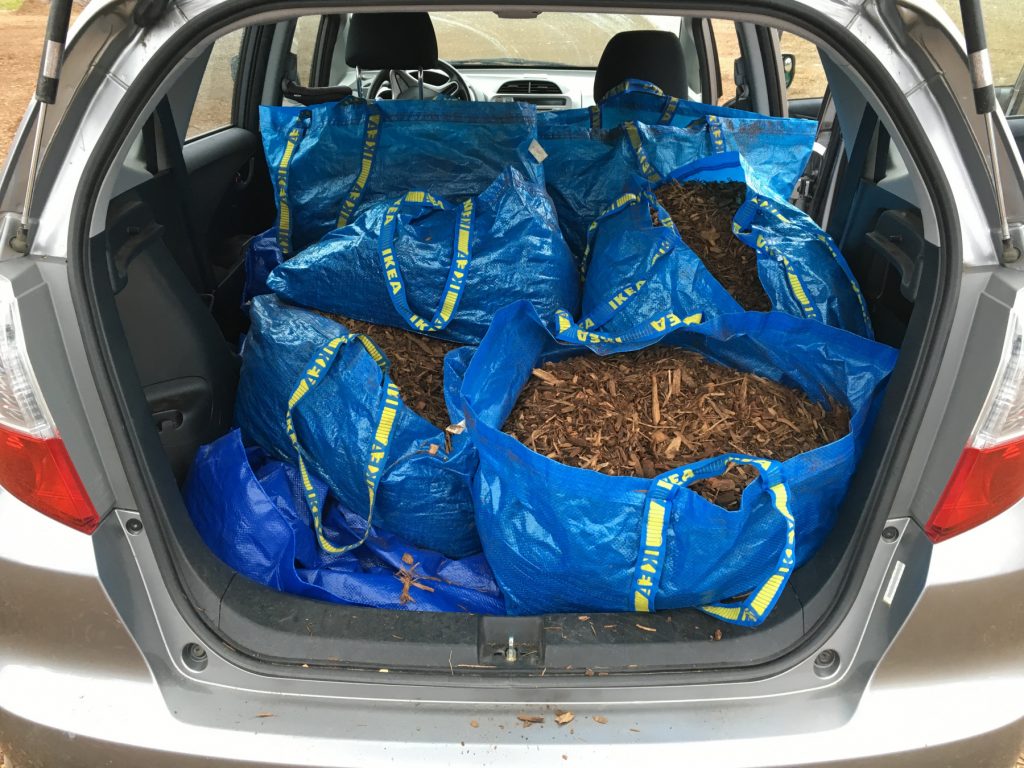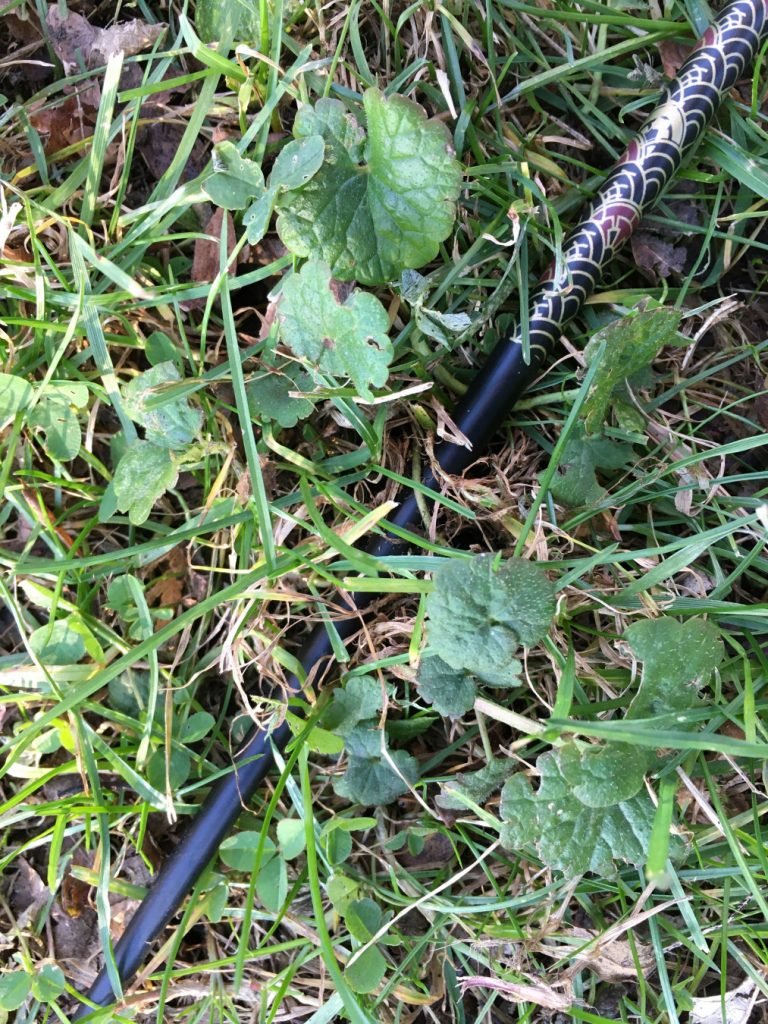
Many gardeners, stuck inside, are itchy to go shopping. Emails and catalogs arrive daily, the weather’s still too bad to do much outdoors, and after the pandemic, you have online ordering developed to a fine art. You’re ordering plants anyway, so why not add a tool or two?
It’s worthwhile, though, to go shopping in your house first. Many common household objects make fine gardening equipment.
One of my favorites is the blue plastic Ikea shopping bag. It’s capacious, tough, and adaptable, perfect for collecting weeds and for gathering branches when I’m pruning shrubs. I have about a dozen that I’ve collected over the years. I find them especially handy for hauling mulch from the community wood-chip pile.
Another is chopsticks. They are perfect for planting seeds to grow under lights: Dip the tip in water, touch it into your packet of seeds to pick up just one, and apply gently to your soilless seed-starting mix.
Chopsticks also make fine soil probes, when you’re trying to figure out how far a root system extends or whether the flagstones are laid on dirt or gravel.
They are the best solution I’ve found to one of my most aggravating of weeding problems: the sneaky, sinuous stems of creeping Charlie that snake through my lawn. Those stems are so delicate that if I just yank, they break, and any scrap left behind can take root. If I have a chopstick, though, especially one with a slick finish, I can slide it right under the stem to lift it up and off the grass blades.
I don’t buy peat pots for planting. Instead, I roll biodegradable pots out of newspaper. For germination greenhouses, I use those plastic containers rotisserie chickens come in. Each one will hold five or six newspaper pots. If you don’t have a light setup, the chicken greenhouse fits neatly on a windowsill.
Don’t overlook the recycling bin—even other people’s recycling bins. I have no cats, but my neighbors do, so I have scored several fine gardening buckets that once held kitty litter. A plastic milk jug or bleach container makes a fine lawn spreader for grass seed or fertilizer. Cut off the top side, leaving the neck and the handle intact. Drill several ¼ holes in the bottom. Fill. Shake over prepared soil. Works fine.

Now, there are limits to how much I’m willing to repurpose household junk in the garden. A lot of people will plant in practically anything—old boots, used paint cans, dozens of mismatched plastic pots in clashing colors. In the private back 40 where I grow vegetables, I’m not particular, as long as the container is large enough to provide sufficient soil volume and has a hole in the bottom. But out front where I’m gardening for looks, I like my containers to more or less match, or at least coordinate, so they recede visually and let the plants be the stars.
When I think I really need to buy a new tool, I first check out the tool room. Usually, I already have one. It’s easy to forget, the way I have six bottles of olive oil because I always think I’m almost out.
Sometimes the tool is rusty or dull and just needs some attention. One of the best ways to spend a winter evening is to spread a tarp or newspaper on the coffee table; gather some steel wool, rags, light oil, a diamond file or whetstone, and a couple of used toothbrushes; and binge-watch something while I resurrect old tools. There’s more satisfaction in creating a new sharp edge than in shopping for one.










